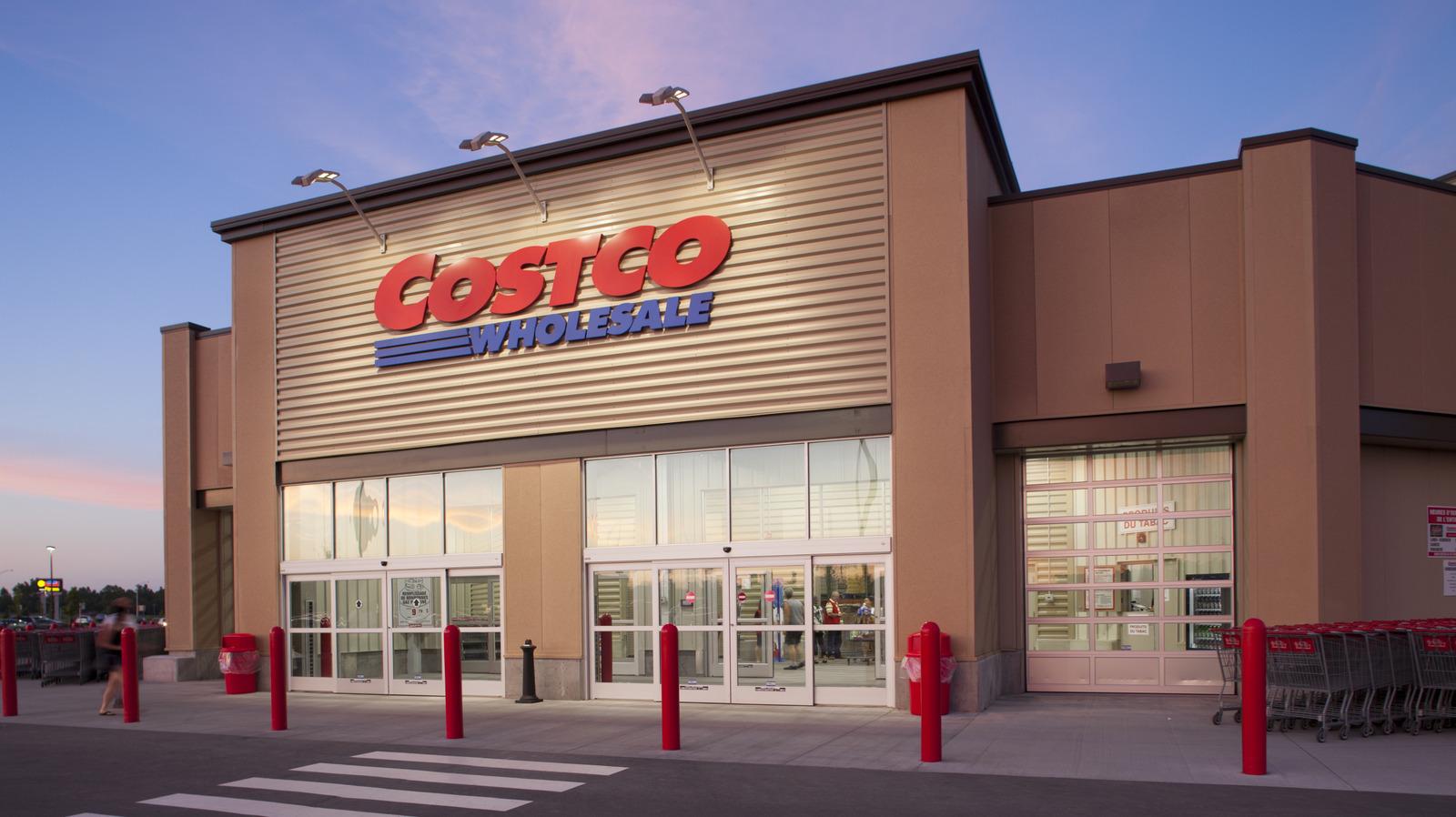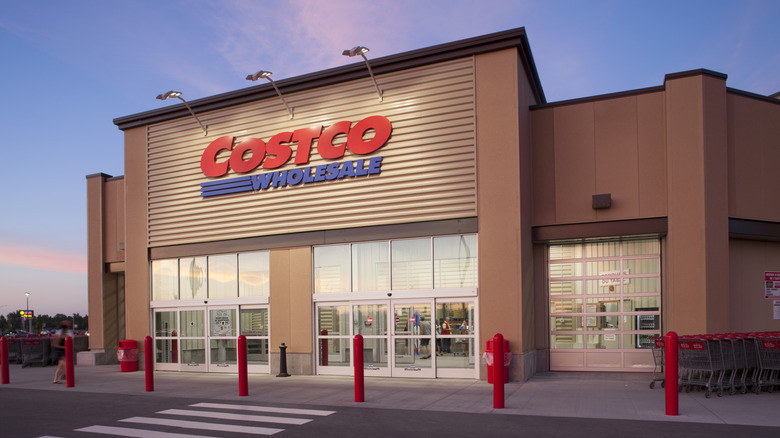
Yvandube/Getty Images
Costco has grown into a global retail giant, renowned for its unbeatable deals and no-frills shopping experience. But in 1983, when the first Costco warehouse opened in Seattle, the experience was far different from today's bustling aisles filled with Kirkland Signature products and $1.50 hot dog combos. Modeled after Price Club, a membership-based wholesale retailer founded in 1976, Costco catered primarily to small business owners and government employees. The early days featured modest promotions, a bare-bones shopping environment, and a focus on bulk goods at low prices.
In 1993, Costco merged with Price Club, solidifying Costco's position as the largest warehouse club, propelling it toward the expansive global operation it is today, with more than 800 warehouses serving 133 million members worldwide. As we journey back to 1983, let's take a closer look at the humble beginnings of Costco and how it transformed from a local warehouse in Seattle to a global powerhouse, shaping the way millions of people shop for everyday essentials.
The opening day
The opening day of the first Costco warehouse in Seattle on September 15, 1983, was a humble affair — nothing like the bustling, media-covered grand openings of today's new warehouses. There were no elaborate ribbon-cutting ceremonies or long lines of enthusiastic members; instead, it was billed as a "business show," aimed specifically at small business owners and wholesalers. Promotional efforts were modest, relying on direct mail, printed flyers, and local newspaper advertisements, including a listing in the Seattle Post-Intelligencer a day before the opening on September 14, 1983. Costco mailed special booklets to businesses, inviting them to visit the store between 10 a.m. and 8:30 p.m. The booklet contained a cut-out invitation, serving as a one-day shopping pass, allowing attendees to explore the wholesale pricing model.
According to company lore, some of the first employees were even instructed to park in customer spots to make the lot look busy. Founders Jim Sinegal and Jeff Brotman had scraped together $7.5 million from investors to launch the first warehouse, located in an industrial part of South Seattle. At the time, they cautiously hoped the idea might grow to a dozen stores.
Today, Costco doesn't spend anything on traditional advertising, instead relying on a fiercely loyal customer base that has grown steadily over the past four decades. The wholesale company's early mission to cater to the practical needs of small business owners — an approach born from Brotman's retail-savvy background and Sinegal's experience with Price Club — helped attract its first members and continues to define its success today.
No Kirkland yet, but bulk savings galore
When Costco first opened its doors, shoppers did not yet see the now-iconic Kirkland Signature brand on the shelves. Instead, the warehouse company stocked a variety of private-label products under nearly 30 different brand names, including Simply Soda, Clout laundry detergent, Nutra Nuggets dog food, and Chelsea toilet paper. Other products that were once available but have since disappeared from Costco's shelves included typewriters, stereo systems, and cigarettes.
At the time, Costco's focus was on bulk sales and competitive pricing, but its private-label strategy lacked a unified identity. It wasn't until 1995 that co-founder Jim Sinegal introduced Kirkland Signature, consolidating all store-brand products under one recognizable name. The brand was named after Kirkland, Washington, where Costco's headquarters was originally located, before moving to Issaquah.
Since its introduction, Costco has been able to keep Kirkland Signature products at an affordable cost. The shift to private labeling allowed the company to have more control over product quality and pricing. Instead of outsourcing brand-name items or relying on flashy advertising, Costco focused on quietly partnering with reputable manufacturers, sometimes even the same ones behind national brands, to produce Kirkland items to high standards. For example, Kirkland Signature batteries are made by Duracell, and its diapers are produced by the same company that manufactures Huggies. Today, Kirkland Signature generates nearly a third of Costco's revenue and includes everything from groceries and household essentials to apparel, vitamins, pet food, and even gasoline, often outperforming name-brand competitors in quality tests.
Payment with only cash or check
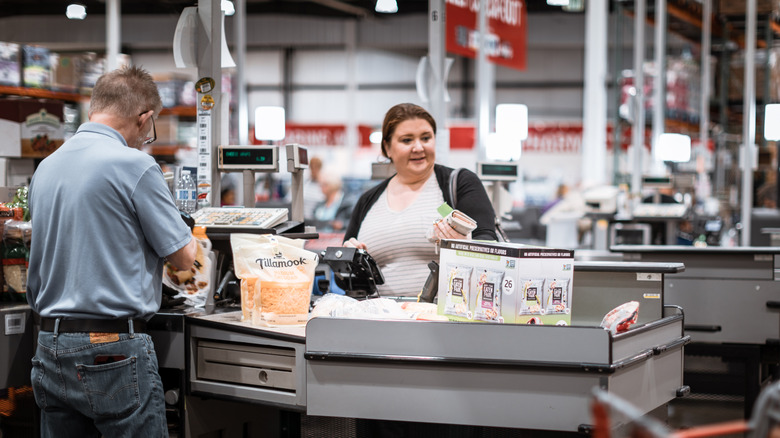
ARTYOORAN/Shutterstock
In its early days, Costco operated with a simple, no-frills approach, and that extended to its payment methods. When the first warehouse opened in Seattle, shoppers could only pay using cash or checks. Since Costco primarily catered to business owners at the time, avoiding credit card processing fees helped keep costs low.
Recognizing the need to modernize in the 1990s, Costco gradually introduced credit and debit card payments. In 1999, it entered an exclusive partnership with American Express, making Amex the only accepted credit card for 16 years. However, in 2016, Costco ended its relationship with American Express and transitioned to Visa and Citigroup. The shift expanded payment flexibility for Costco members, allowing them to use Visa credit cards, Mastercard debit cards, and other digital payment options. Today, Costco accepts cash, checks, Visa credit and debit cards, Costco Shop Cards, and mobile payment options like Apple Pay and Google Pay.
No gas pumps, no pharmacy, just bulk buys
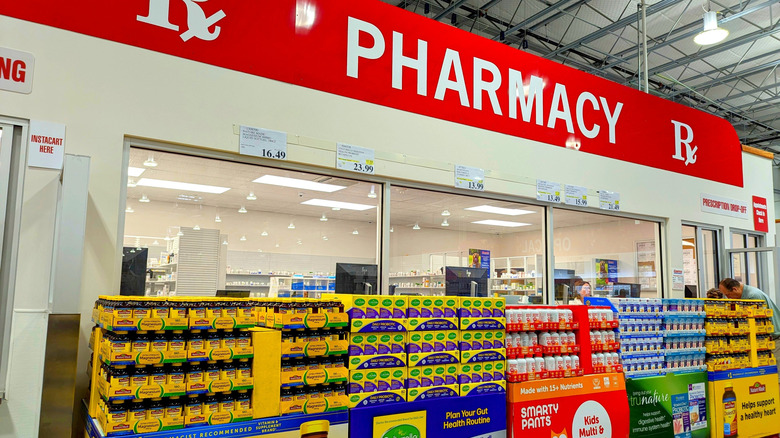
PJ McDonnell/Shutterstock
In the first Costco warehouse, there were no gas pumps, no pharmacy, no food court, no insurance offerings, and certainly none of the additional services members enjoy today. It wasn't until 1986 that Costco introduced its first pharmacy, recognizing the growing demand for discounted prescriptions among its expanding customer base. Fun fact: non-Costco members can also use Costco's pharmacies, although members may receive lower prices. The next year, in 1987, Costco's bakery, produce, and meat departments began, and members could purchase fresh food for the first time.
Nearly a decade later, in 1995, Costco opened its first gas station, and it quickly became one of the company's most beloved services. Today, Costco gas stations are often found on the edge of parking lots, drawing long lines of members eager to save. And for good reason: surveys have repeatedly shown that Costco's gas is among the cheapest available, often selling for 20 to 25 cents less per gallon than competitors.
In 2000, Costco launched Costco Travel, a dedicated division offering members discounted vacation packages, cruises, and rental cars to destinations such as Europe, the Caribbean, Hawaii, and Mexico. Many locations also feature Costco Optical, where licensed optometrists provide eye exams and help customers select contact lenses and glasses tailored to their needs. Over time, Costco expanded its services even further, introducing home and auto insurance options through Connect and enhancing its healthcare offerings. Today, the original Seattle warehouse — though slightly relocated — provides all of these services, along with additional conveniences such as car washes and tire service centers.
No $1.50 hot dogs (yet)
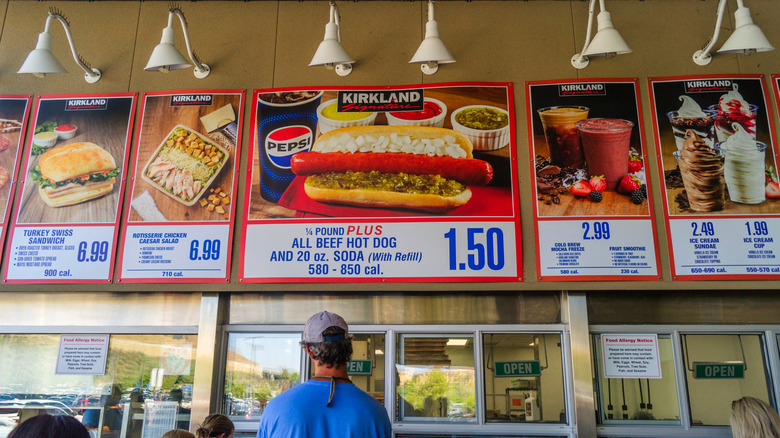
allnewalbert/Shutterstock
Hot dogs and food courts were absent from the first Costco warehouse. It wasn't until 1984 that the famous $1.50 hot dog and soda combo made its debut, originally at Price Club, before migrating to Costco after the two companies merged. The hot dogs were initially supplied by Hebrew National, but were such a hit that Costco eventually launched full-service food courts offering pizza, churros, chicken bakes, and other affordable favorites. Plus, here's a secret: even non-members can enjoy Costco's food court — check out our rankings of all the menu items before your next visit!
Beyond American food courts, Costco's food courts now serve poutine in Canada, croquettes in Spain, bulgogi bake in Korea, and tortas in Mexico, with regional variations around the world. Despite inflation and shifting food prices elsewhere, the $1.50 hot dog combo has never increased in price since 1984. This is largely due to the fact that Costco now makes its own hotdogs, without a supplier, and it's even gotten bigger over the years — the hot dog is 10% larger, and the soda has grown from 12 ounces to 20 ounces with free refills. The hot dog combo has remained $1.50 since its introduction, despite decades of inflation, making it one of the most recognizable deals in retail history.
No frills warehouse layout
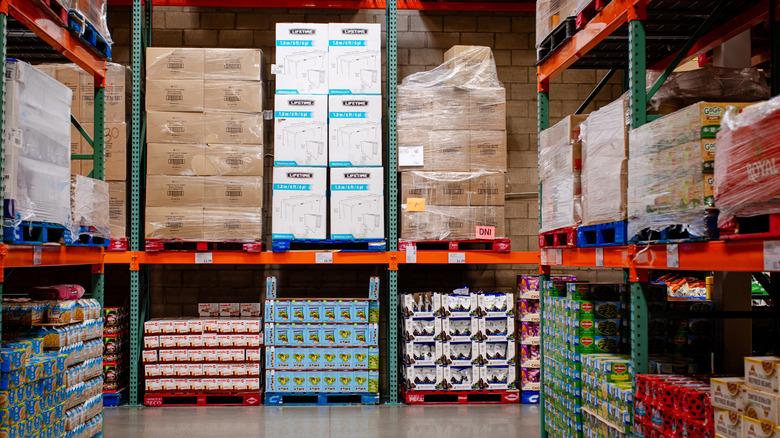
bluestork/Shutterstock
Costco's original 100,000 square foot warehouse layout was intentionally utilitarian. Inspired by the minimalist model of Price Club in San Diego, Costco's co-founders, Jim Sinegal and Jeffrey Brotman, embraced a no-frills design that prioritized function over form. Rather than investing in polished store décor, the company opted for exposed ceilings, unpainted concrete floors, and industrial shelving. Merchandise was displayed directly on shipping pallets or warehouse racking, creating a raw, stripped-down atmosphere that has since become iconic.
There were no mannequins, no product staging, and no department signage beyond basic category labels. By eliminating expenses like elaborate fixtures and flooring, Costco was able to pass savings directly on to members. Customers handled their own carts, loaded their own bulk items, and originally paid by cash or check only, which reduced the need for sales staff, delivery teams, and credit operations.
As the company expanded, its warehouse design remained largely unchanged. Modern locations are larger, averaging about 146,000 square feet, but the warehouses still adhere to the original aesthetic of concrete floors, steel shelving, and wide aisles. Over the years, some refinements have been made, such as more clearly delineated departments, especially in electronics, grocery, and seasonal goods, and the addition of pharmacies, optical centers, and gas stations. Yet the emphasis remains on efficiency: minimal decoration, maximum volume, and a layout designed to move shoppers quickly through bulk inventory with few distractions.
Membership was just $25
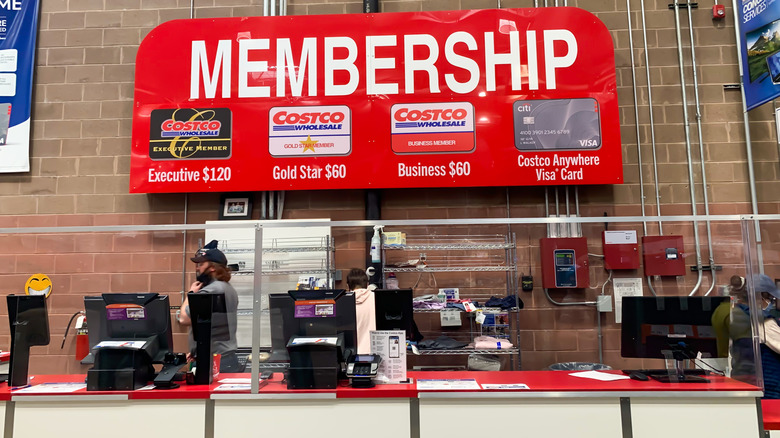
gg5795/Shutterstock
The original Costco membership came with specific qualifications, especially for businesses. When the first Costco opened, a business membership cost just $25 per year, but it wasn't available to everyone. To sign up, prospective members needed a Washington state resale permit, a city or county-issued business license, or documentation showing they were a government entity or church. The goal was to keep the model focused on wholesale purchasing for qualified buyers.
For individuals outside the business world, group gold memberships were the way in, but they came at a higher price. These cost $30 per year and granted limited shopping privileges, though purchases came with a 5% markup compared to business members. Eligibility extended to government employees, utility company workers, bankers, teachers, airline staff, hospital employees, and credit union members.
Over time, Costco gradually expanded its membership structure. Now, anyone who is at least 16 years old is eligible for a membership card. Since its founding, Costco has raised its membership fees eight times, with each increase occurring in $5 increments. Today, the gold star membership ($65 per year) is open to anyone, and the business membership ($65 per year) still exists but no longer requires proof of a Washington business license. The executive membership ($130 per year), introduced in 1998, now includes cashback rewards, discounts, and travel perks.
No fresh produce, meat, or free samples
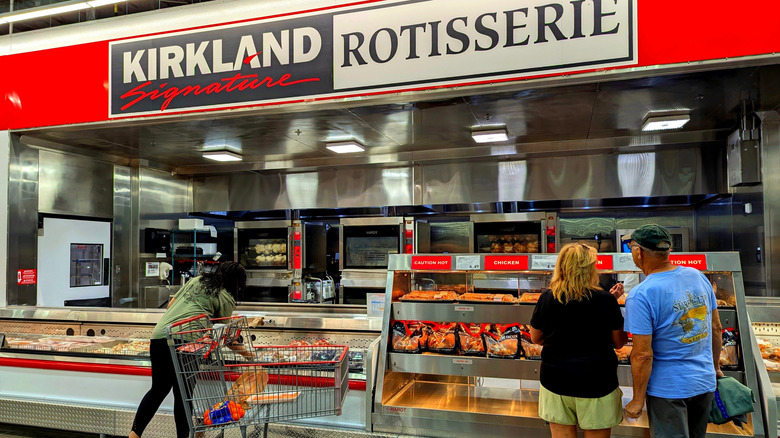
PJ McDonnell/Shutterstock
When Costco first opened, its grocery selection was limited to non-perishables, candy, soft drinks, beer, and wine. Fresh produce, meat, bakery items, and even the free samples that later became a signature element of the store environment were not part of its early inventory. At the beginning, Costco's strategy was to sell bulk goods to business owners with minimal emphasis on traditional grocery shopping.
The transformative shift toward fresh food offerings began as the company's customer base expanded beyond small businesses. In 1987, Costco introduced its first fresh meat department, marking the retailer's introduction into selling perishable items. Shortly afterward, the company opened its first produce and bakery departments, laying the groundwork for the vibrant array of fresh foods — including organic produce, diverse bakery selections, seafood, and eventually the iconic rotisserie chickens — that shoppers enjoy today.
Many consumers assume that the people handing out free samples are Costco employees, but this is a common misconception. These employees actually work for Club Demonstration Services (CDS), a third-party company contracted to run Costco's sampling program. CDS provides dedicated staff who conduct controlled taste events. Over the years, these samples have become a staple of the Costco experience, with many shoppers timing their visits around peak sampling hours.
There have always been receipt checkers
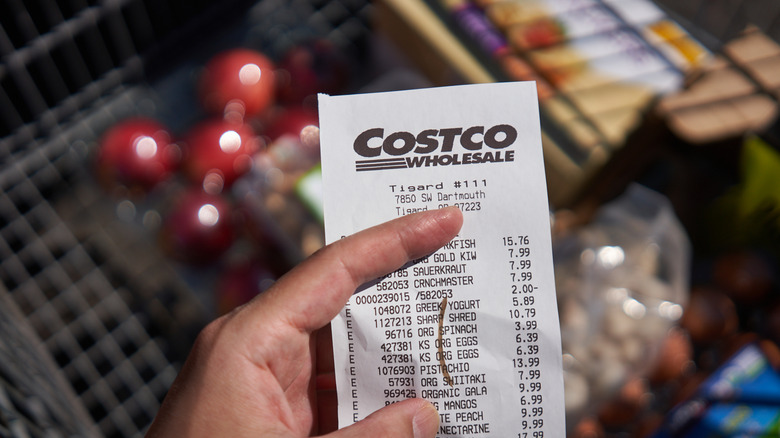
Tada Images/Shutterstock
Since its earliest days, Costco has stationed receipt checkersat store exits, making it a familiar and consistent part of the shopping experience. Unlike other retailers that may have recently adopted this practice to combat theft, Costco has always required members to show their receipts before leaving.
While some shoppers debate the necessity of the policy, it's more than just a security measure — it's part of the membership agreement, which all Costco members must adhere to. The membership terms explicitly state that receipts must be shown at the exit to confirm that all items were properly billed and that no mistakes occurred at checkout.
Costco representatives have clarified that the process is designed not to police shoppers, but to ensure accuracy. With thousands of items moving quickly through checkout lanes, the brief review also helps to prevent overcharging, missed scans, or duplicate charges. Despite occasional pushback, the tradition has remained consistent. As shoppers make their way to the exit, a Costco receipt checker reviews their purchase, occasionally brightening the moment with a quick smiley face.
No delivery options
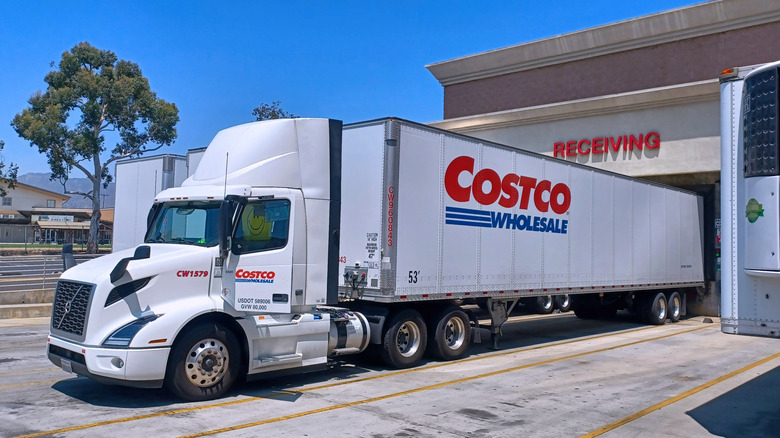
Elliott Cowand Jr/Shutterstock
Costco's inaugural warehouse established a retail model grounded in bulk purchasing and self-service efficiency. From the beginning, the company structured its operations to minimize overhead, encouraging customers to shop in person, load their own purchases, and handle transportation themselves. At that time, there was no integrated home delivery service — partly because the technological and logistical infrastructure necessary for such an operation was not available and partly because the business model centered on the savings through in-store, self-service shopping.
However, as digital commerce became the norm and customer expectations shifted, particularly during the 2010s, many large retailers, including Costco, were pressured to adapt. In 2017, Costco formally expanded its offerings with Costco Grocery, a delivery service for non-perishable goods available to members. The program provided free two-day shipping on orders over $75 and included thousands of items such as dry pantry goods and household products. Two-day delivery is available across the United States with the exception of Alaska, Hawaii, and Puerto Rico. Costco also began leveraging same-day delivery partnerships with Instacart to offer fresh food and household item delivery for members in select ZIP codes. Executive members can get a monthly credit for same-day delivery.
This move was designed to offer a more convenient alternative to shopping in-store, particularly for those looking to bypass crowded warehouse environments and lengthy shopping trips. The delivery service gained popularity during the COVID-19 pandemic in 2020, with its e-commerce sales tripling from 2019. However, some customers have found the delivery service to be unreasonable, with some customers having to receive their orders in the middle of the night.
Returns always lenient ... most likely
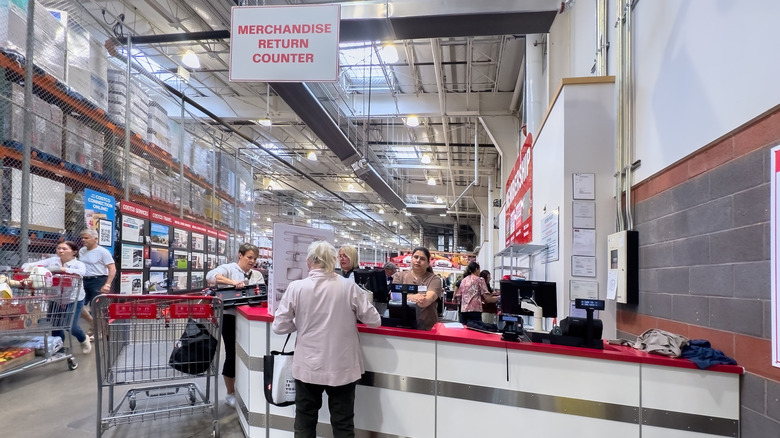
oasisamuel/Shutterstock
Costco's return policy is widely celebrated for its extremely generous, customer-first approach — a hallmark that has helped drive member loyalty over the years. Modern documentation on Costco's customer service website confirms that members enjoy a 100% satisfaction guarantee, which means that most items can be returned if they are defective or unsatisfactory.
However, when examining the company's earliest days in the 1980s, details of the return policy are less clear. While industry lore and longtime member recollections suggest that early shoppers could return most items with minimal hassle, especially if a product was damaged or defective, we have not been able to verify that the policy was as lenient as it is today due to a lack of archived records from that era.
By the late 1990s and early 2000s, Costco had built a reputation for accepting returns with few questions asked. However, in 2007, after instances of policy abuse, the retailer instituted a 90-day return window for electronics such as TVs and laptops — a significant shift from its previous open return approach.



